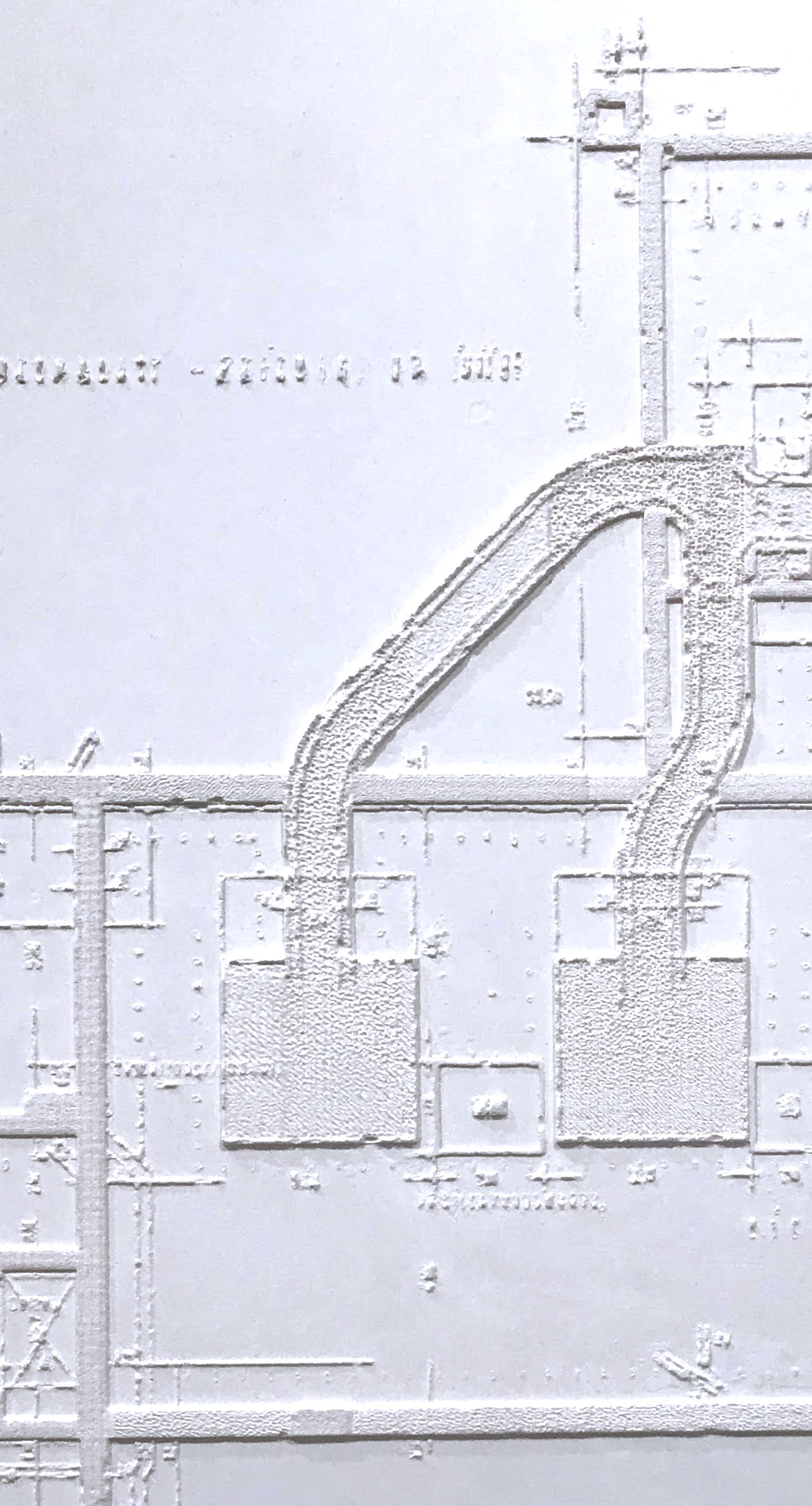
During a recent trip to Washington, D.C. I visited the Hirshhorn Museum and saw a powerful installation entitled The Evidence Room. The exhibition was developed by an architectural team from the University of Waterloo and was originally commissioned for the 2016 Venice Biennale. The work compiles the architectural evidence of the Holocaust. A portion of a plaster cast, shown here, depicts the drawings used to construct the gas chambers at Auschwitz. The other 68 panels outline detailed plans for the largest facility designed for systematic mass murder in world history. Interestingly, much of this forensic evidence was used in the 2000 libel case that proved the purpose and intent of the Nazis’ regime and this horrific site.
The evidence consists of a well thought out set of construction documents for building a death factory, equipped with gas chambers and crematoria. Architects often attempt to avoid responsibility for their work by thinking of it as a benign service — simply giving form to the needs of their clients and society. However, this exhibit clearly demonstrates the responsibilities we all have when utilizing our knowledge, skills and talent. Architectural Historian Robert Jan van Pelt, one of the exhibition team members, correctly called this “the greatest crime ever committed by architects.” The Evidence Room serves as a space of contemplation — to consider the personal and professional responsibilities we all have to ensure that the horrors of the past are never repeated.
